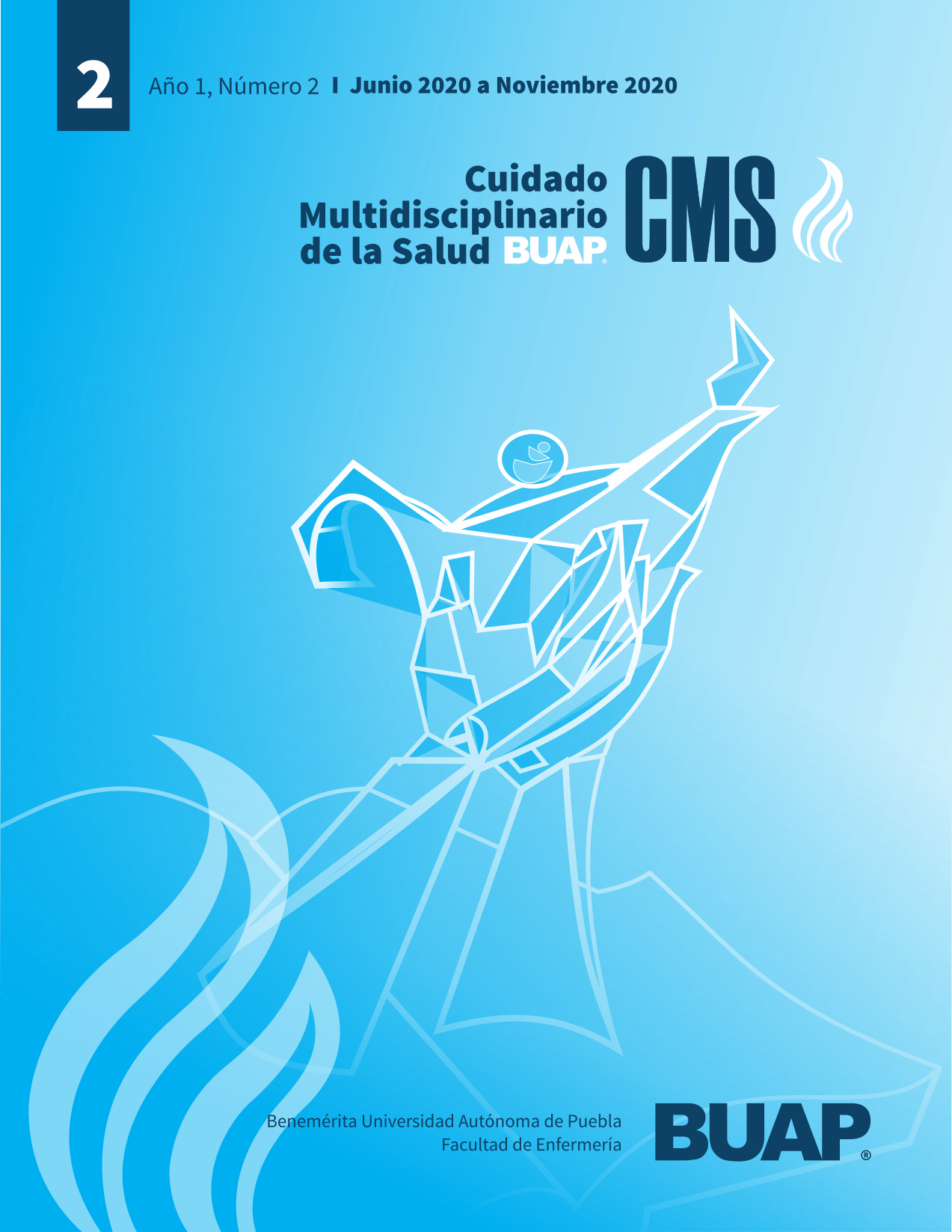Multidisciplinary approach in a patient with lymphedema
Keywords:
Cancer, Breast Cancer, Lymphedema, (DeCS)Abstract
Introduction. Lymphedema has no cure, however, with a proper intervention from the multidisciplinary team, it might be prevented or improved. Complete decongestive therapy is one of the appropriate treatments, due to the combination of manual lymphatic drainage, lymphokinetic exercises, and compressive bandages.
Purpose. To present a case study of a woman with lymphedema after a quadrantectomy with radical ganglion dissection from a multidisciplinary approach of oncological medicine and physiotherapy.
Methodology. Case study, 71 years-old female patient who received a chemo-radiotherapy plus hormones for two years, presented bilateral neuropathy in the upper limbs, lymphedema type II was diagnosed, with no pain in the affected limb.
Interventions. She was treated with manual lymphatic drainage and lymphokinetic exercises to help to improve the weakness and the pumping of the lymphatic valves.
Results. Reduction of the swelling of the right upper limb (from one centimeter and a half up to two centimeters in some parts of the arm), reddening, fibrosis, and thickening reduction.
Conclusions. The multidisciplinary team has an important role when addressing a patient suffering from lymphedema because side effects caused by radical mastectomy or lymphadenectomy can be prevented or improved.
References
American Cancer Society. (26 de Septiembre de 2019). Linfedema (PDQ)-Versión para los profesionales de la salud. American Cancer Society. Recuperado de https://www.cancer.gov/espanol/cancer/tratamiento/efectossecundarios/linfedema/linfedema-pro-pdq#_20_toc
Argüelles Otero, L., & Fernandez Prieto, T. (2014). Atención de Enfermería a Pacientes con Cáncer de Mama y en riesgo de desarrollar Linfedema. Enfermeria Comunitaria, 2(4), 50-69.
Arias-Cuadrado, A., Álvarez-Vázquez, M. et. al. (2010). Clínica, clasificación y estadiaje del linfedema. Elsevier. Rehabilitación (Madr). 2010; 44(S1: 29-34).
Chaná C, Pedro, & Alburquerque, Daniela. (2006). La clasificación Internacional del Funcionamiento, de la Discapacidad y de la Salud (CIF) y la práctica neurológica. Revista chilena de neuro-psiquiatría, 44(2), 89-97. Doi: https://dx.doi.org/10.4067/S0717-92272006000200002
Godoy & Godoy (2016). Terapia Linfático Manual: Concepto Godoy & Godoy. São Paulo: Espressão e Arte Editora e Gráfica.
Instituto Nacional del Cáncer. (20 de Octubre de 2019). Cuadrantectomía (def.). Instituto Nacional del Cancer (NIH): Diccionario. Recuperado de https://www.cancer.gov/espanol/buscar/resultados?swKeyword=cuadrantectom%C3%ADa
López- Montoya, L. (2015). El linfedema explicado. Segunda edición. Mexico D.F.: Fenix.
Villán J., Cano Sierra J. D., Patarrollo M. P., Camilo Garay A., Bernal J. A., Carrero G. S., Rios L. (2015). Linfedema Crónico. Revista Semilleros Med, 9(1) 65-75. Recuperado de https://www.researchgate.net/profile/Juan_Cano7/publication/322093909_Linfedema_Cronico/links/5a44503ea6fdcce19718c0e6/Linfedema-Cronico.pdf
Srur, E., Toro, P., Leiva, M., Rojas, M., & Contreras, N. (2016). Tratamiento transdisciplinario del linfedema mediante terapia físico-combinada compleja. Análisis de nuestra experiencia. Angiología, 68(1) 33-37. Recuperado de Doi: https://doi.org/10.1016/j.angio.2015.04.008
World Confederation for Physical Therapy. (14 de Octubre de 2016). Physical therapy. World Physiotherapy. Recuperado de https://world.physio/resources/glossary
Zuther, Joachim, E (2005). Lymphedema Management.The compresive Guide for Practitioner. [Linfedema]. Ed.Thieme.Medical Publisher,inc.:New York.Stuttgar, pp.218-224.
Downloads
Published
How to Cite
Issue
Section
License
The moral rights belong to the author, the economic rights belong to the Benemérita Universidad Autónoma de Puebla.






